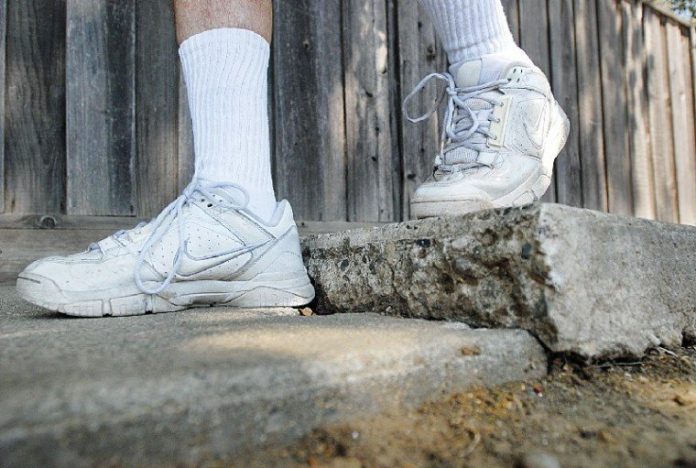In an effort to elucidate the contentious sidewalk ordinance
after a month-and-a-half of public outcry, the city council voted
unanimously to split the bill in two, devoting one to only
maintenance issues and the other specifically to the city’s and
residents’ respective liabilities for sidewalk-related
injuries.
Gilroy – In an effort to elucidate the contentious sidewalk ordinance after a month-and-a-half of public outcry, the city council voted unanimously to split the bill in two, devoting one to only maintenance issues and the other specifically to the city’s and residents’ respective liabilities for sidewalk-related injuries.
City staff will flesh out the revised ordinances and bring them back to council for another vote, probably by Oct. 1, according to City Clerk Shawna Freels. But City Transportation Engineer Don Dey said it might take a little longer.
Some councilmen said frustrated constituents have come to them with misunderstandings, specifically that the ordinance transfers to property owners all of the liability for injuries sustained on buckled sidewalks adjacent to their lot. In reality, property owners must maintain their sidewalks and “assume the proportionate liability if an accident should occur in the sidewalk area,” according to a memo filed by Dey.
Councilmen didn’t address the seemingly overlooked contradiction between the sidewalk policy and the city’s Street Tree Policy.
The former says property owners must repair sidewalks that “are dangerous to the public health, safety and welfare of the inhabitants of the city.” The tree policy similarly “allows for street-tree removal when the tree presents a public safety hazard,” according to a report by Carla Ruigh, the city’s operations services manager. But “the [tree] policy does not allow for tree removal because of damage to sidewalks.”
While the Parks and Recreation Commission can grant exceptions to the policy, City Administrator Jay Baksa said the two policies “are not contrary.”
“They’re almost supplemental,” Baksa said of the two policies. “You’re either going to bring a tree down yourself through the Parks and Recreation Commission, or you’ll go through the city’s 50-50 sidewalk program.”
Baksa added that since “[the city is] maintaining the tree, we’re accepting liability,” which is another gray area Mayor Al Pinheiro addressed Monday night.
“People don’t understand the proportional liability,” Pinheiro said. “Splitting the ordinance will clarify any confusion.”
Confusion has arisen over the fact that section 5610 of the state Streets and Highways Code says property owners must maintain their sidewalks in a safe, working condition, but they’re not responsible for portions of the sidewalk damaged by “any person other than the owner” who has “a right granted to him by law or by the city authorities.”
So where does a city-protected tree fall? It’s a sidewalk-damaging, city-sanctioned entity, and the city planted nearly all of the trees that “cause 90 percent of the problems,” according to Dey, so should property owners have to pay at all?
“This ordinance does not transfer liability to adjacent homeowners for accidents caused by city-planted trees,” said City Attorney Linda Callon Monday night. “If there’s an accident, and it ends up in court, there’ll be a proportional assessment of liability.”
While this seems clear, at the July 30 council meeting that resulted in the initial, single ordinance, Callon said, “This bill has teeth in it to transfer liability from the city to residents … It creates a big incentive for people to really maintain their sidewalks.”
This is what residents seem to have heard the loudest, and it’s still true that if they ignore their sidewalks, their culpability rises, but Councilman Craig Gartman used Dey’s 90 percent figure to say “the damage caused by the (city-planted) trees has nothing to do with the property owner.”
Still, if a property owner disregards their sidewalk problem, the city engineering department could repair the cement and then bill the resident, Baksa said. But the city hasn’t placed a lien on a property for repairs since the late 1970s, and the city’s cost-splitting “50-50” program has contributed to that, he said.
“If you want to wait until the city has funds to totally repair the sidewalk, then you can do that,” Baksa said. “Residents don’t have to be involved in 50-50 program.”
About 100 property owners are participating in the 50-50 fund, which has about $350,000 in it from gas taxes and the general fund, the source of any extra money needed to satisfy a potential flood of 50-50 applicants. The program has funded $2.7 million in sidewalk repairs since its inception in the early 1990s, Baksa said.
The maintenance ordinance would still require property owners to repair deficient sidewalks if they move or if they obtain a building permit worth $10,000 or more from the city.














